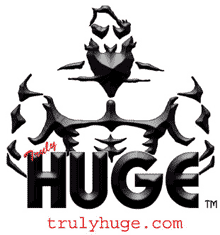
Click Here for Free Bodybuilding and Fitness Magazine Subscription
Studies on High Intensity Training

What Do Studies Really Say About High Intensity Training Routines?
If there’s one thing that hardcore bodybuilders love almost as much as training itself, it’s debating which training methods are the best. And if you’re looking for a great conversation starter among iron pumpers, nothing gets the arguments flowing like high-intensity training, or HIT.
Ever since Arthur Jones burst onto the scene with his Nautilus equipment in the early 1970s, HIT has polarized the bodybuilding community, and that trend shows no signs of letting up. Supporters point to HIT as a safe and efficient way for reaching your muscular potential, while critics point to HIT as a surefire way to get injured, fat, and/orskinny.
So, what’s the real story about high-intensity training, and are there scientific studies to help us decide just how good HIT is?
As it turns out, there is a decent body of knowledge surrounding HIT, and that information can help guide us. Before we dig in, though, let’s take a quick look at what high-intensity training is (or isn’t).
What Is High-Intensity Training?
Definitions of high-intensity training vary somewhat based on audience, but the most widely held characteristics of true HIT are those originally coined by Jones’ pupil and associate, Dr. Ellington Darden. In particular, Darden describes HIT as:
- Low Frequency – three workouts or less per week
- Low Volume – one to three exercises per bodybart
- Whole-Body Workouts – all bodyparts worked in the same workout
- One Set – just one set per exercise in a workout
- Number of Repetitions – eight-to-12 reps as a starting standard
- Repetition Speed – slow and controlled
- Failure – each set taken to a point of momentary muscular failure
On the whole, then, HIT is marked by single sets to failure, performed slowly and infrequently, at least compared with more “mainstream” methods. There are many variations on the theme, but this basic template remains at the heart of HIT, and it’s a strikingly different approach to training than the bombing and blitzing that fills most muscle magazines.
What Does Science Say About HIT?
Can you really get big and strong, or ripped, using the HIT model of less exercise carried to a point of muscular failure?
Several scientific studies have set out to answer that question, and, while the results have been varied, some trends have emerged. Among the the published papers, we find:
- A 2007 study out of Norway compared the effectiveness of one set v. three sets for both upper-body and lower-body exercises. The researchers found that subjects experienced about double the strength increases for lower-body movements when performing three sets as compared to just one set over the twelve week study, but found no significant differences for the upper-body movements.
- Several recent literature reviews, encompassing nearly 200 separate studies, have reported that multiple sets in general produce better strength gains than single-set training. As a side note, one of the reviews found that hypertrophy (muscle growth) was also better in the multiple-set groups.
- In contrast, scientists from England found in 2011 that there is no appreciable difference in results obtained from one set v. multiple sets per exercise.
- Similarly, research from 2001 at from the Center for Research in Health Behavior found that nearly all of the health benefits of resistance training can be realized in two weekly sessions lasting 15-20 minutes.
You could break down the review papers into any of their constituent studies, but you’d see a similar type of mixed-bag results. Some point to the superiority of multiple-set training, while some say one set is all you need.
What do we do with this information, then?
Is HIT Right for You?
While the seeming lack of clarity regarding HIT in the scientific literature may be discouraging, the fact is that most of the research results trend toward the same conclusion:
On the whole, multiple sets of an exercise appear to be capable of producing better overall results in strength and hypertrophy than single-set training, but the differences are not dramatic.
For most trainees, then, and for most of the time, high-intensity training will produce results nearly as good as more traditional volume training. When you factor in the time spent in the gym, HIT represents a good training value for many fitness enthusiasts.
If your goal is to peak for a physique competition or to eek out every last ounce of muscle mass possible, however, then you will likely need to eventually consider moving on from HIT, at least for short periods.
In most instances, HIT will give you the most bang for your training buck, but it may not be the perfect training program in every situation. For most lifters, though, its efficiency is hard to beat.

